Pesaro boasts a number of beautiful villas, one of which Elke and Otto visited two years ago, the Villa Imperiale: it is considered one of the most interesting pieces of architecture in Italy from the 15th and 16th centuries, the Renaissance period, more precisely the High Renaissance . In addition to the unusual Mannerist architecture and the extensive gardens, it also keeps some wonderful frescoes inside – all good reasons to visit! Here is Elke’s report:
We head north from Pesaro, in the southern part of the Parco Monte San Bartolo (which we wrote about in a previous article) and move along pleasantly shaded paths from the villa’s spacious parking lot to the starting point of the guided tour.
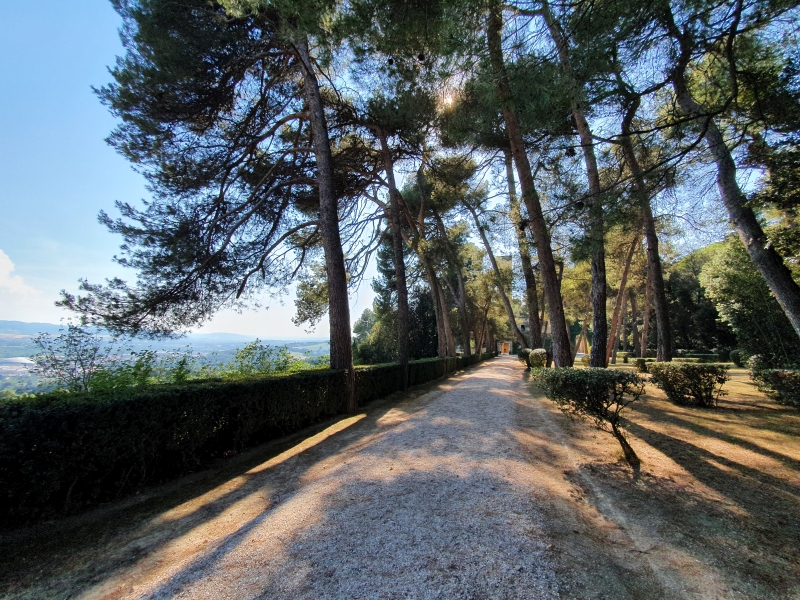
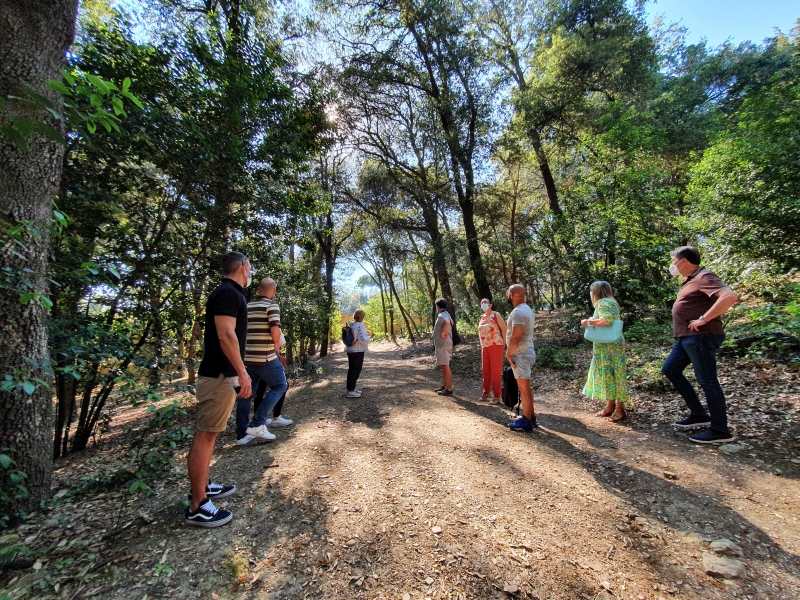
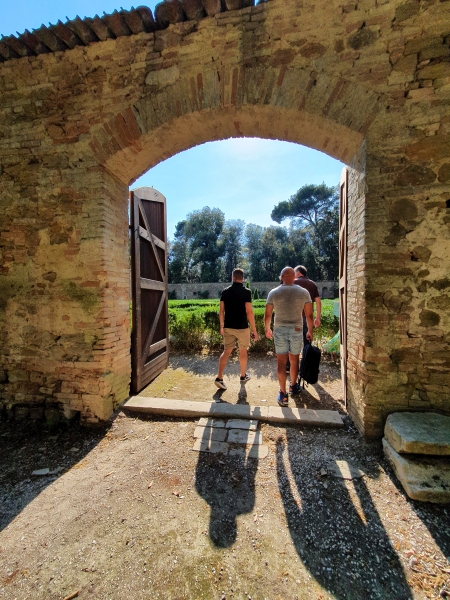
Our guide explains that one of the characteristics of the villa are the beautiful viewpoints of the sea, the plains around Pesaro and the Monte San Bartolo Park. We start on the top level of the multi-storey complex and enjoy the views of the surroundings, the gardens and the villa itself. Perspectives and spatiality are played with a lot here – certainly a characteristic of the Renaissance mannerist style, which I think is considered to be particularly imaginative, original and sophisticated.


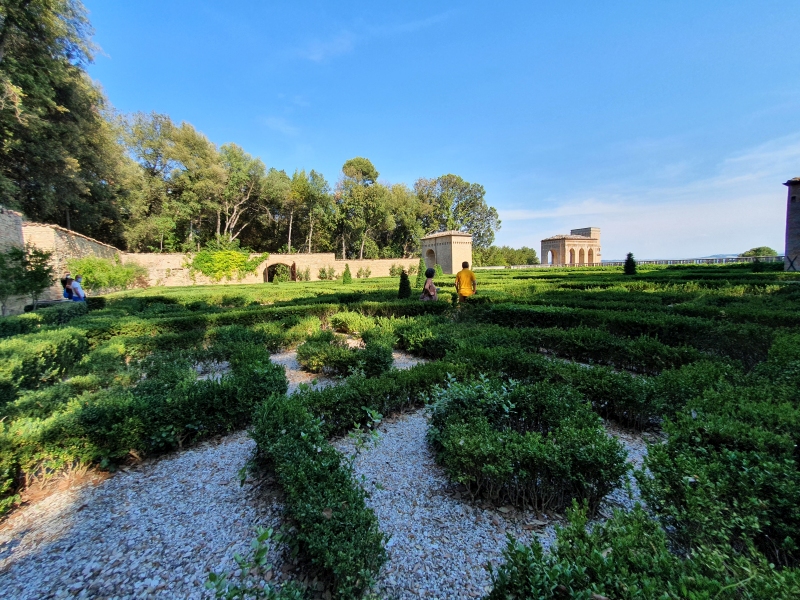
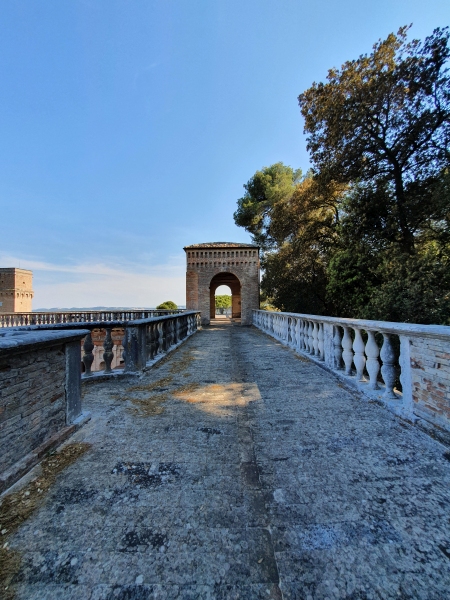
The Villa Imperiale was built over 2 centuries and consists of 2 different wings, the first of which was built in the 15th century by Alessandro Sforza, one of the lords of Pesaro. None other than Emperor Friedrich III. von Habsburg visited Sforza in Pesaro in 1452 and laid the foundation stone of the building. Therefore it is called Villa Imperiale, i.e. imperial villa. (Meanwhile it could also be called the Royal Villa, as the current King of England, Charles, also paid a visit in 1988!)
The first, older part is normal architecture of the period, in the Medici style, and is characterized by a high tower and a courtyard with a decorative fountain, which is reached through a passage:
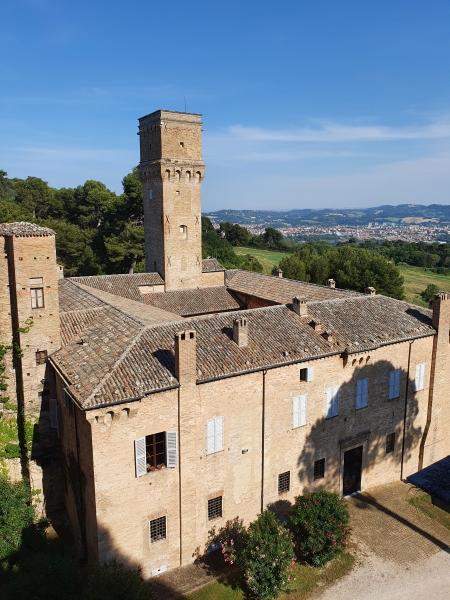
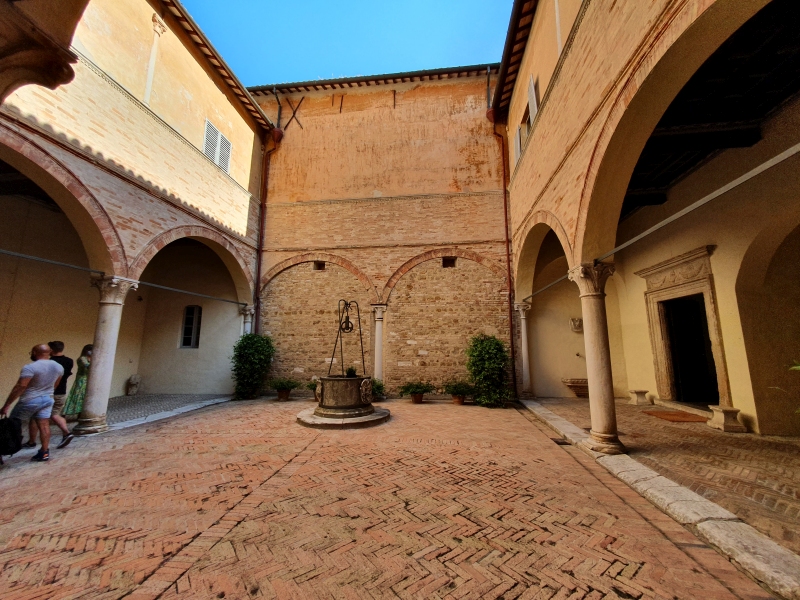
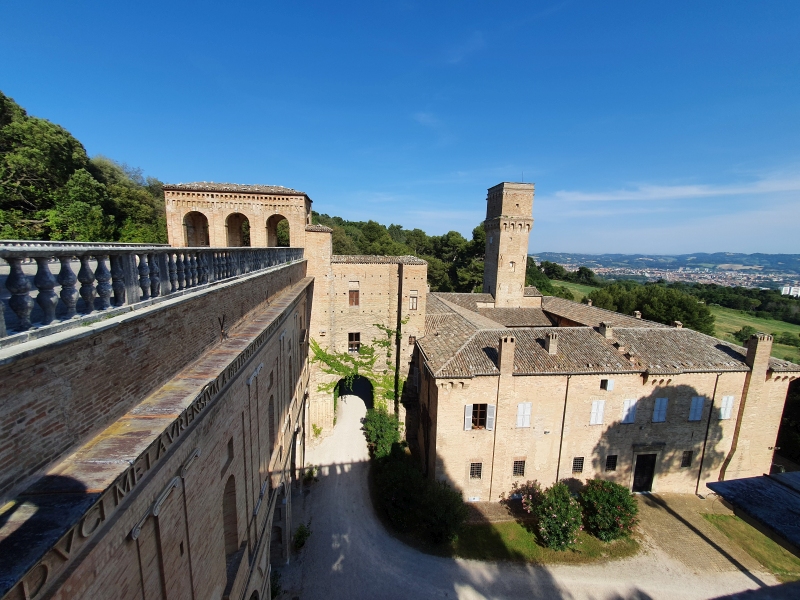
But back to our visit: from the upper garden we approach the buildings and suddenly look down into a large courtyard of the two-storey villa part that Francesco Maria I della Rovere, Duke of Urbino, commissioned in the 16th century , in order to convert the building, which had meanwhile fallen to the Medici and then conquered by him, into a pleasure villa.
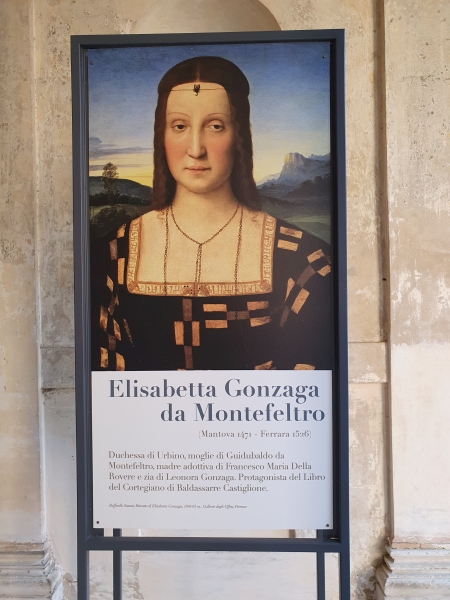
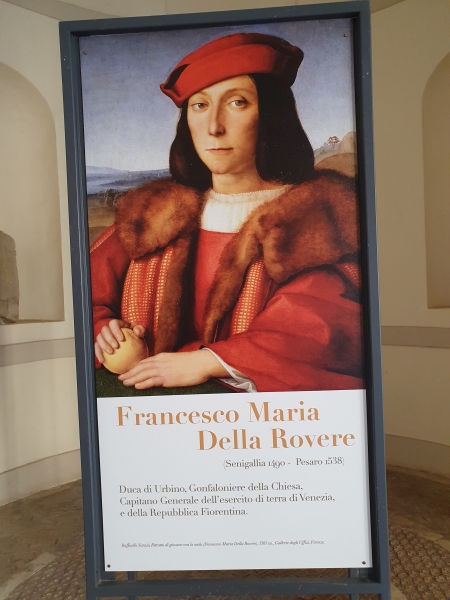
For this he commissioned the famous painter and architect Girolamo Genga from Urbino. At the same time, in 1522, he moved his headquarters from Urbino to Pesaro.
This part of the villa is actually the most spectacular, because here you will find terraces, wide open spaces, courtyards and loggias. Playful, with lots of details and levels. A real luxury villa where della Rovere and guests could relax after their conquests.
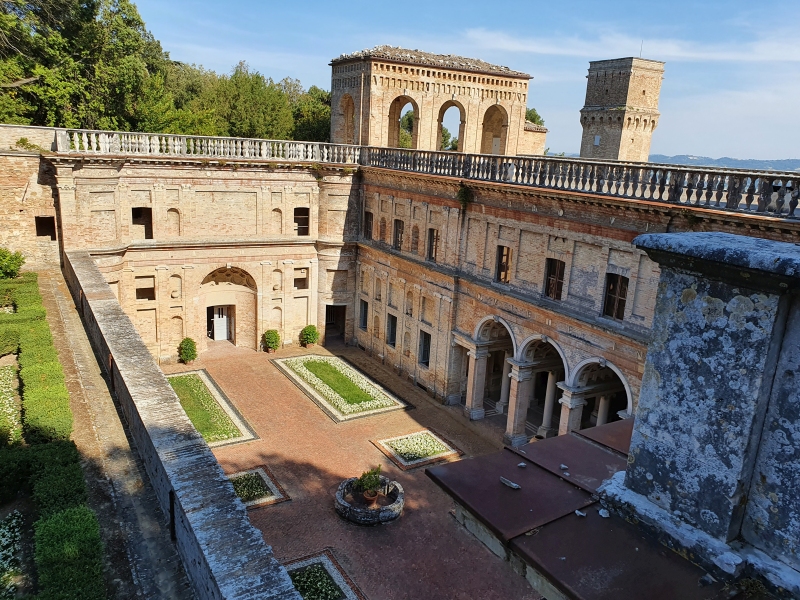



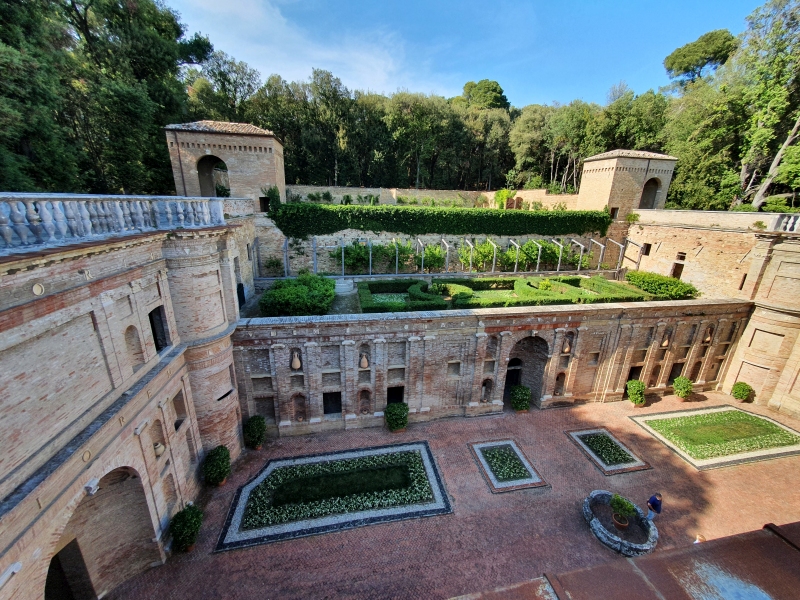
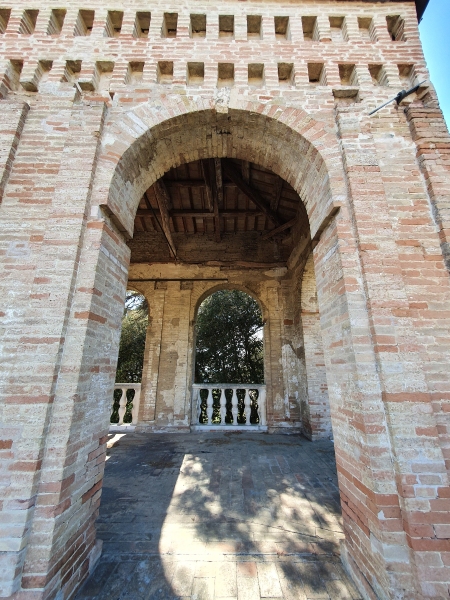
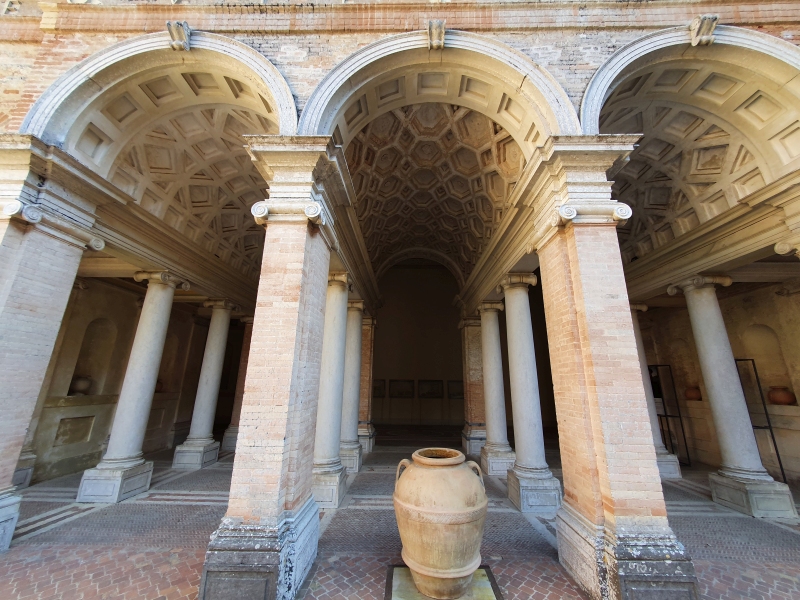
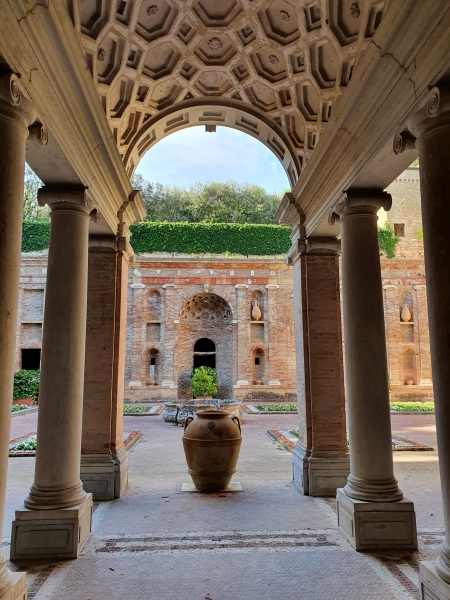
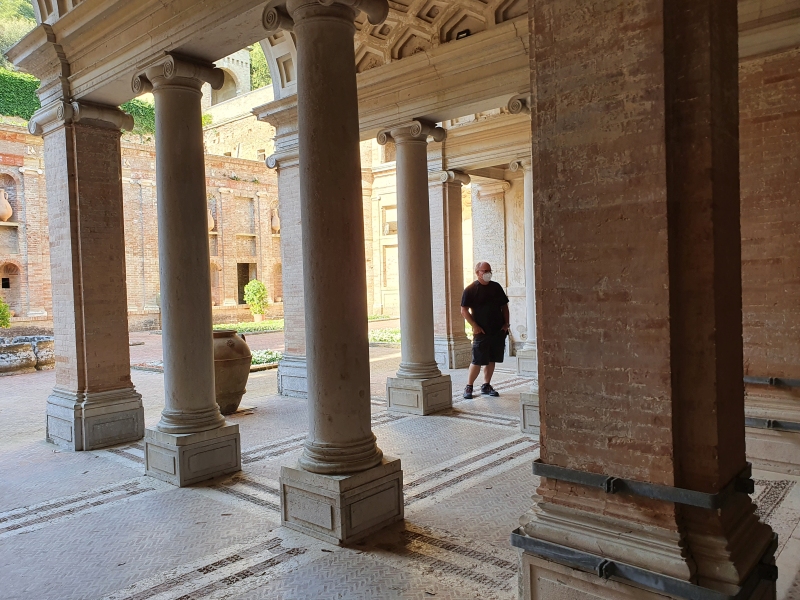
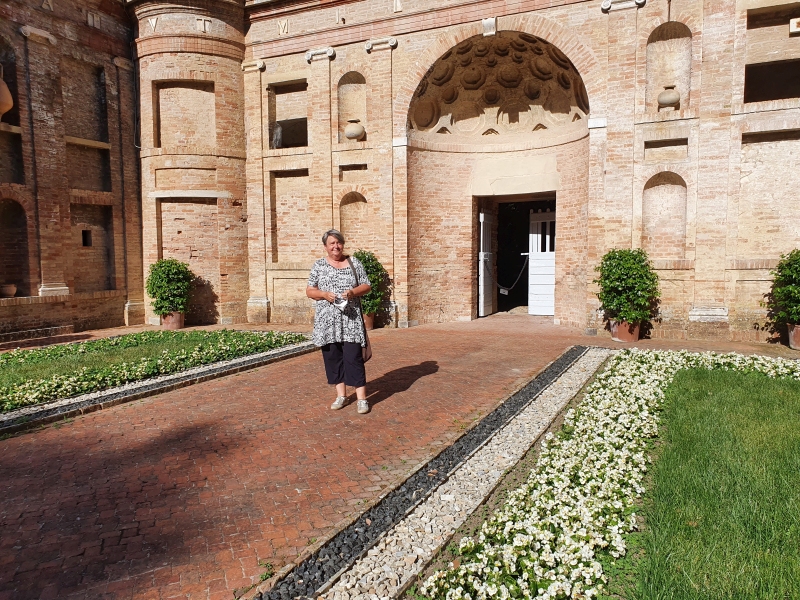
In the 17th century the Duchy of Urbino passed to the Papal States, only the possessions of the della Rovere family passed to the Medicis, who housed Spanish and Portuguese Jesuits here. The rooms were converted into storage and some of the frescoes and decorations disappeared. In the 18th century, the Albani family took over the villa and began having the frescoes painted over. From the 19th century work began on restoring the original frescoes and renovating the villa.
With our guide we now go inside to see the interior decorations and frescoes. It is still Corona time and so we are only allowed to go through the rooms in small groups and do not hear everything the guide says. But the frescoes and the decorations speak for themselves: they are breathtaking, again very detailed and playful and quite unusual, like the spiral mosaic in the private apartments of the della Roveres. The frescoes are by well-known Marchegian artists such as Francesco Menzocchi, Raffaellino del Colle, Camillo Mantovano, Agnolo Bronzino and the Dossi brothers, and the work was supervised by Girolamo Genga himself.

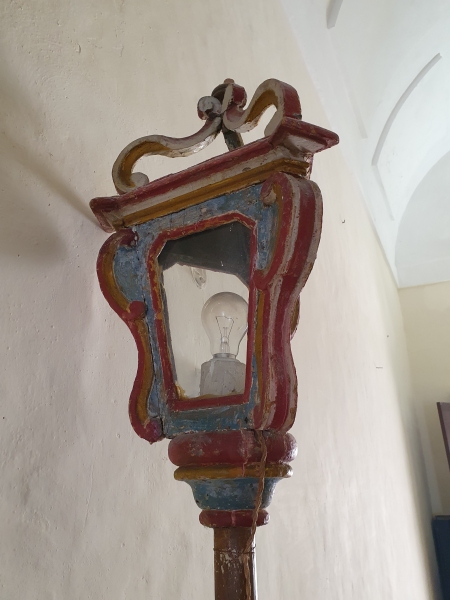
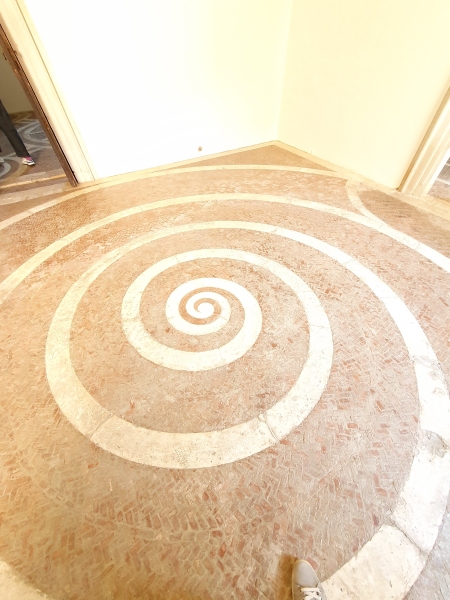

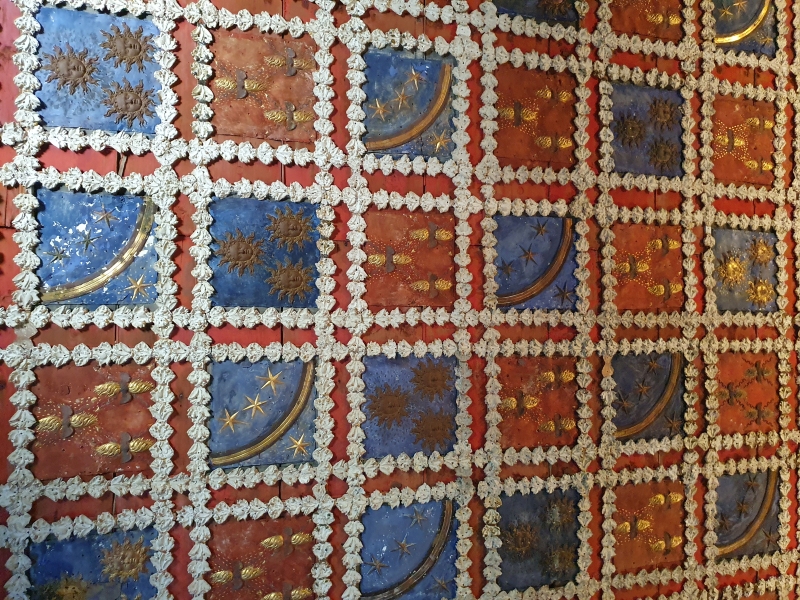
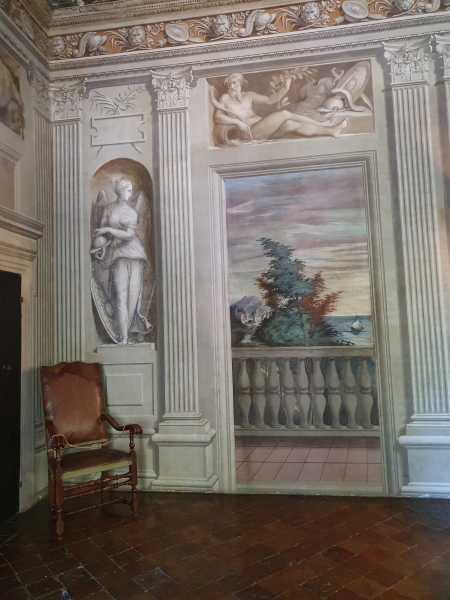

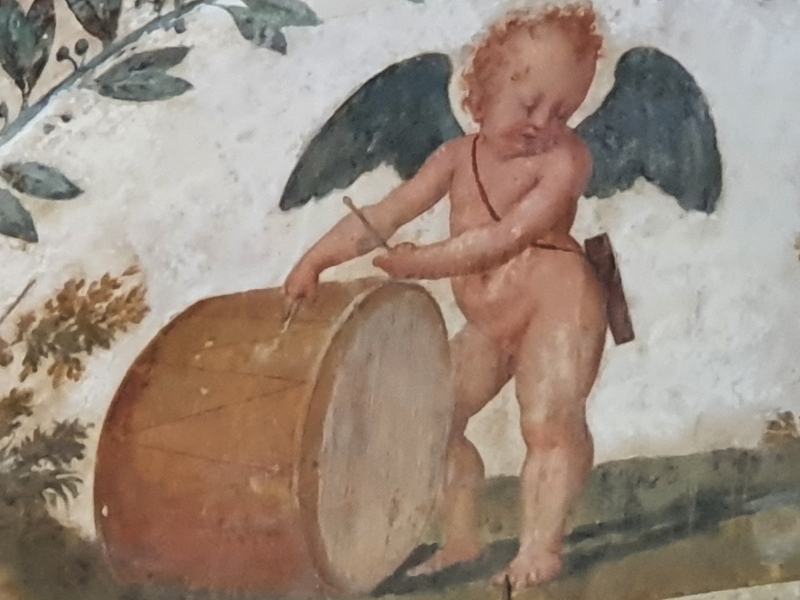
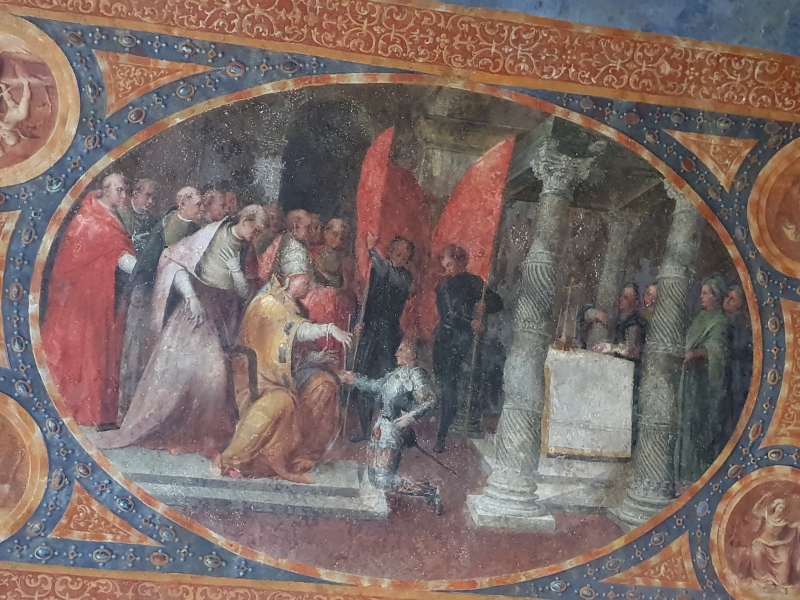
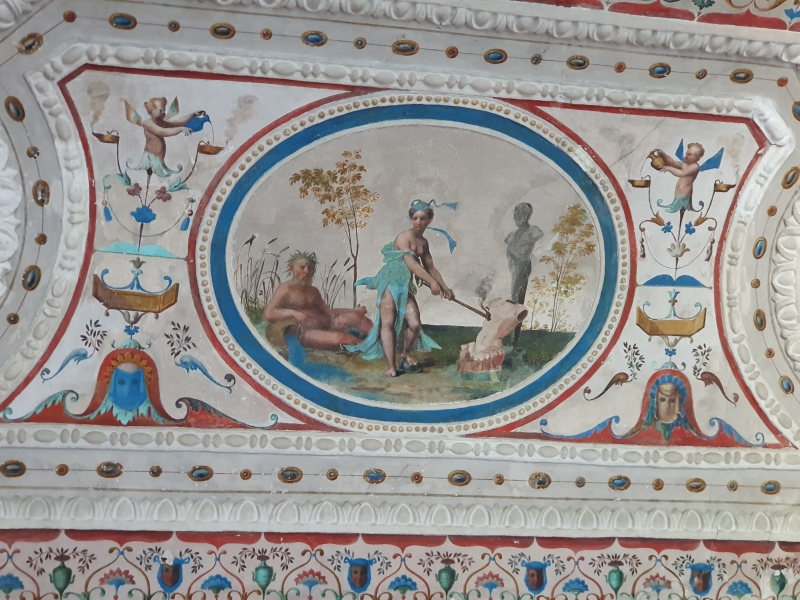
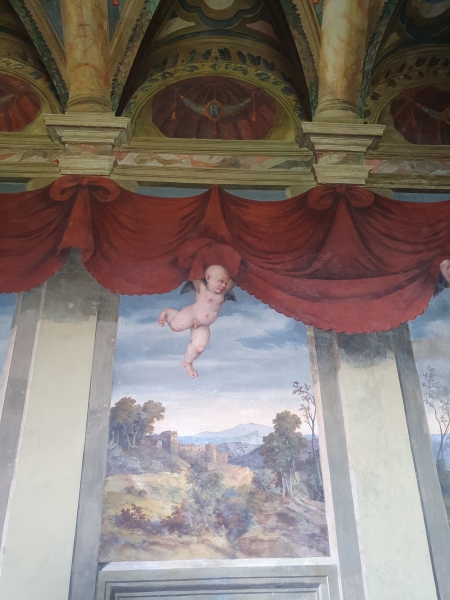
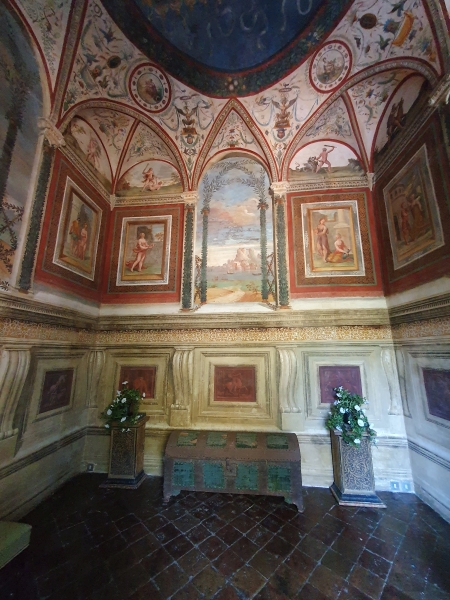
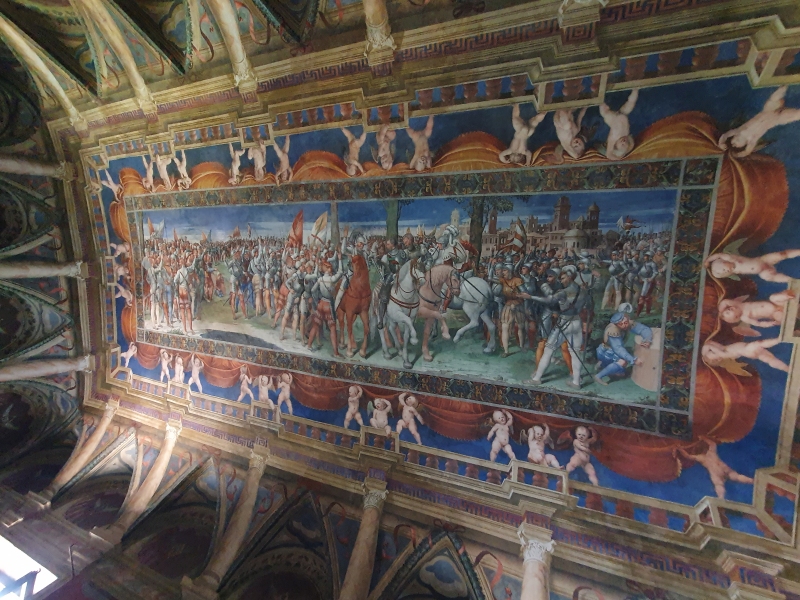
If you want to visit the villa, you have to book a guided tour in advance, which takes place on Wednesdays (3:30 p.m. to 6 p.m.) and Saturdays (10 a.m. to 1 p.m.). You can find the email address and telephone number here. I reserved by email at the time – it went very smoothly.
Other beautiful villas in Pesaro are the 17th-century Villa Caprile, the early 20th-century Art Nouveau Villa Ruggeri (visible only from the outside), the late 16th-century Villa Miralfiore and the Villa Cattani Stuart from the 17th century. Most of them are in private hands, I have included information about visits in the links of the respective villas.
After the visit we treat ourselves to a nice evening on the beach of Pesaro and can even take a look at Villa Ruggeri:


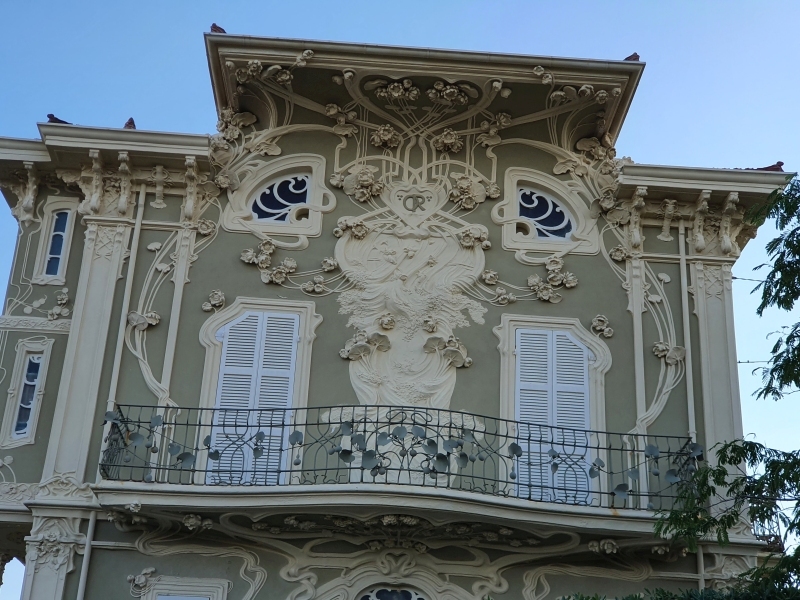
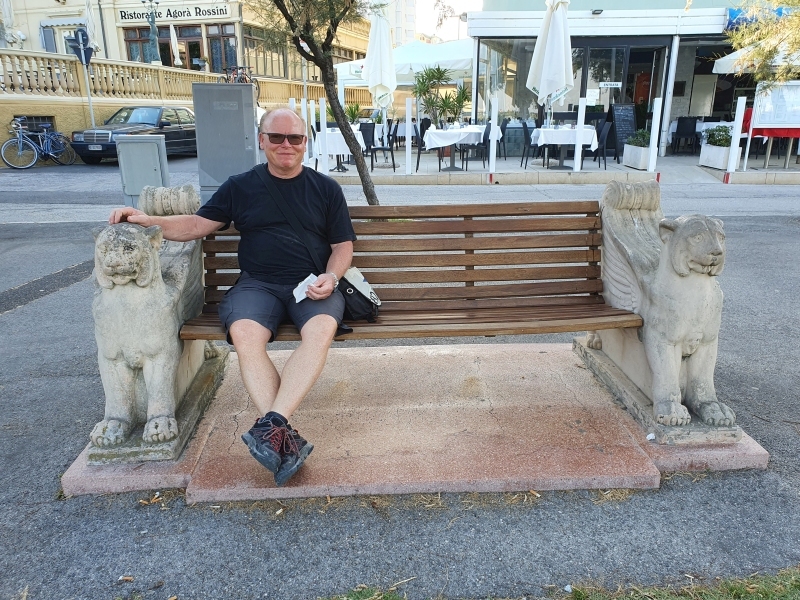
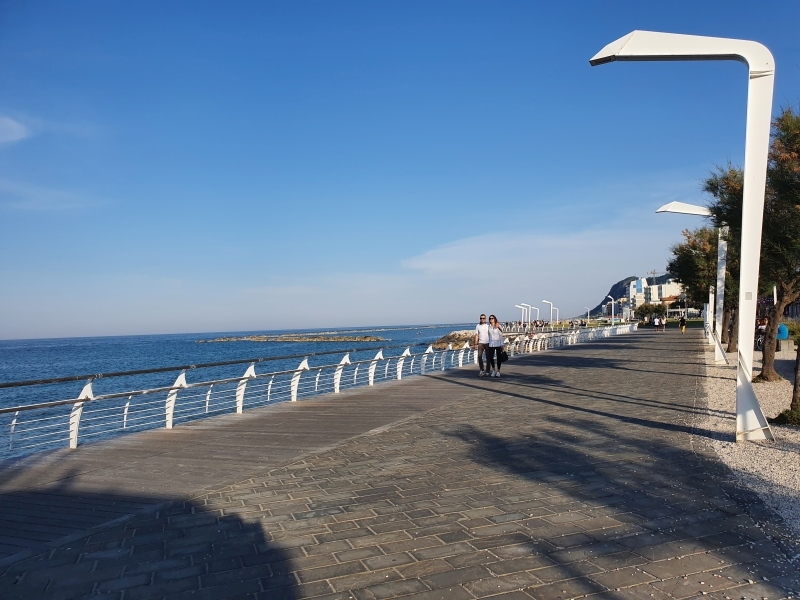
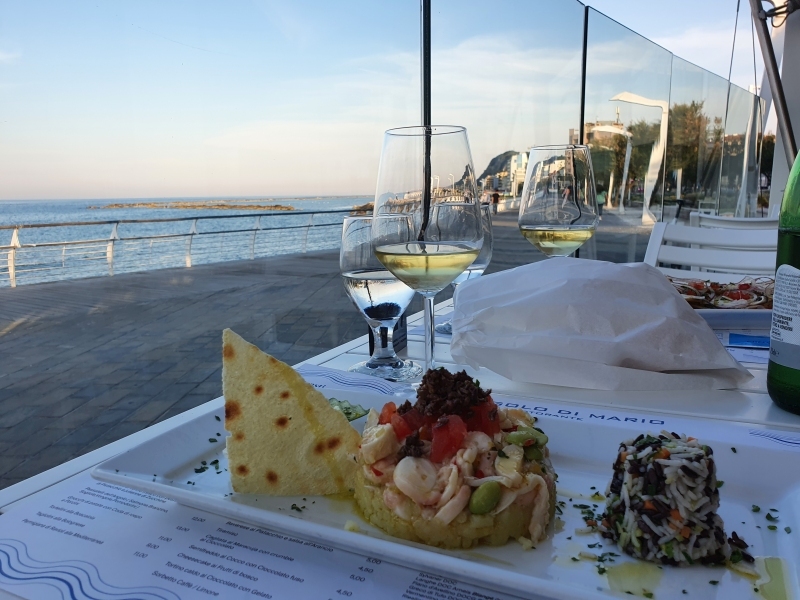
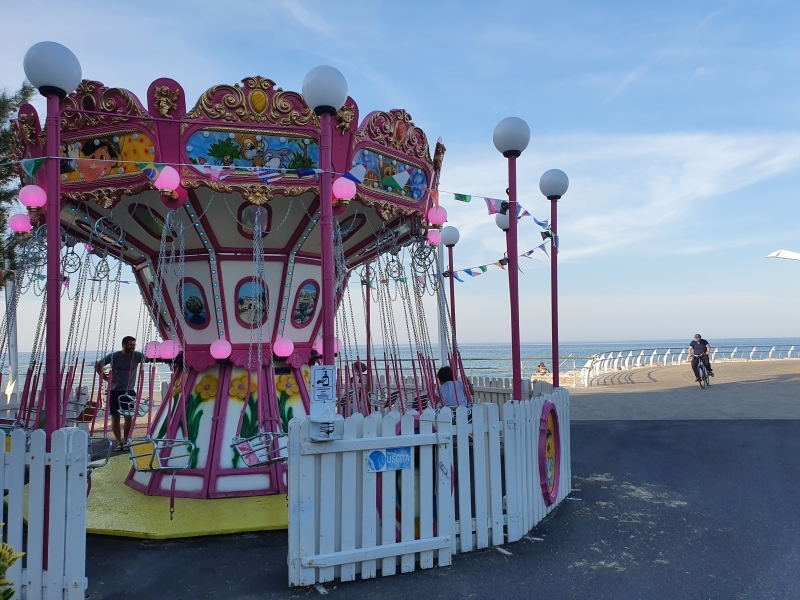
Don’t forget: in 2024 Pesaro will be the Official Italian Capital of Culture!
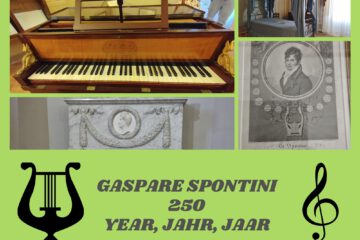
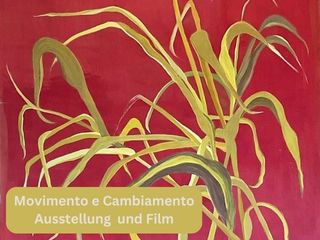
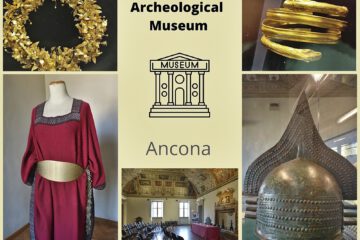
0 Comments